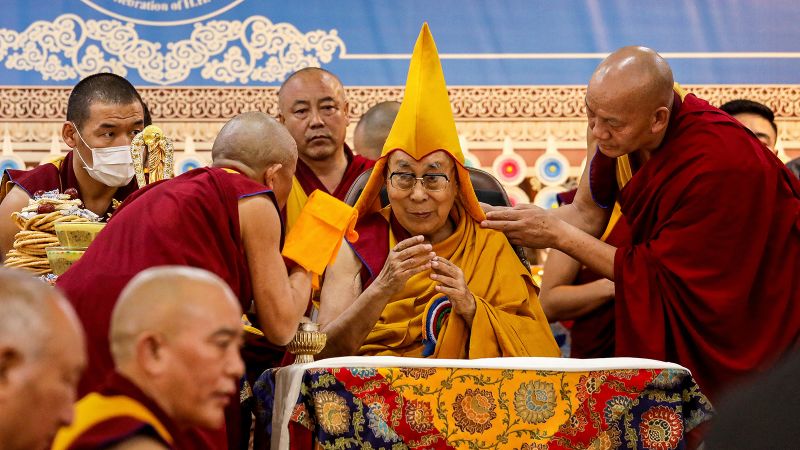The Dalai Lama has announced that he will have a successor after his death, continuing a centuries-old tradition that has become a flashpoint in the ongoing struggle with China’s Communist Party over Tibet’s future. The spiritual leader of Tibetan Buddhism made this declaration on Wednesday through a video message to religious elders gathered in Dharamsala, India. This location has been the Dalai Lama’s home since he fled a failed Tibetan uprising against Chinese communist rule in 1959.
“I am affirming that the institution of the Dalai Lama will continue,” the Dalai Lama stated in the pre-recorded video, citing numerous requests from Tibetans and Tibetan Buddhists urging him to ensure the continuation of the leadership. He emphasized, “The Gaden Phodrang Trust has sole authority to recognize the future reincarnation; no one else has any such authority to interfere in this matter.” This statement underscores the importance of adhering to traditional procedures in the search and recognition of the future Dalai Lama.
The Historical Context of Tibetan Leadership
The Dalai Lama’s announcement comes at a critical juncture. The institution of the Dalai Lama has been a cornerstone of Tibetan Buddhism for centuries, representing both spiritual guidance and a symbol of Tibetan identity. The current Dalai Lama, Tenzin Gyatso, is the 14th in a line of reincarnations that date back to the 14th century. His leadership has been pivotal in maintaining Tibetan cultural and religious practices, especially in the face of external pressures.
Since the 1959 uprising, the Dalai Lama has lived in exile, advocating for the rights and autonomy of the Tibetan people. His efforts have garnered international support, but have also intensified tensions with China, which views Tibet as an integral part of its territory. The Chinese government has consistently attempted to assert control over the selection of Tibetan spiritual leaders, a move that many see as an attempt to undermine Tibetan autonomy.
Implications of the Dalai Lama’s Announcement
The Dalai Lama’s declaration sets the stage for a potential high-stakes battle over his succession. The Chinese Communist Party insists that it holds the authority to approve the next Dalai Lama, a claim that is fiercely contested by Tibetan leaders in exile. In his memoir published in March, the Dalai Lama stated that his successor would be born in the “free world” outside China, urging his followers to reject any candidate selected by Beijing.
“That could lead to the emergence of two rival Dalai Lamas: one chosen by his predecessor, the other by the Chinese Communist Party,” noted a senior analyst on Tibetan affairs.
This scenario could exacerbate existing tensions, leading to further divisions within the Tibetan community and complicating international relations. The potential for dual Dalai Lamas raises questions about the future of Tibetan Buddhism and its global influence.
Expert Opinions and Future Prospects
Experts suggest that the Dalai Lama’s decision to ensure his succession is a strategic move to preserve Tibetan Buddhism’s independence and cultural heritage. Dr. Lobsang Sangay, a prominent Tibetan scholar, commented, “The Dalai Lama’s announcement is a reaffirmation of the Tibetan people’s resilience and their commitment to preserving their spiritual traditions.”
Meanwhile, the international community watches closely, as the succession of the Dalai Lama holds significant geopolitical implications. Countries with vested interests in the region, such as India and the United States, may play crucial roles in supporting the Tibetan cause, further complicating the diplomatic landscape.
As the Dalai Lama approaches his 90th birthday, the world awaits the unfolding of this pivotal chapter in Tibetan history. The process of selecting a successor will undoubtedly be fraught with challenges, but it also represents an opportunity for the Tibetan community to assert its identity and autonomy in the face of external pressures.
The announcement not only reaffirms the continuity of the Dalai Lama’s spiritual lineage but also highlights the enduring struggle for Tibetan self-determination. As the situation develops, the global community will be closely monitoring the implications of this succession battle and its impact on the future of Tibetan Buddhism.
